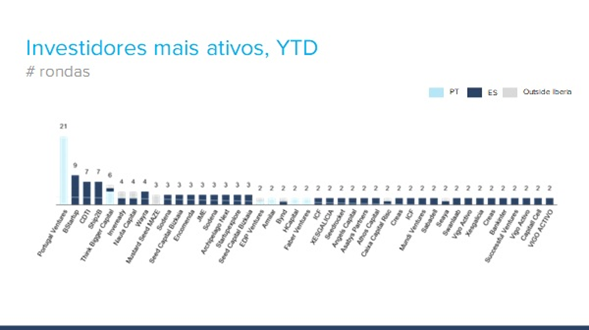Seed Capital and Venture Capital: What’s the Difference?

If you have an innovative startup with scalable early-stage potential or a business plan ready to be implemented, it is very likely that you are facing funding needs involving Seed Capital rounds and soon Venture Capital.
Here we present you the main differences between these two types of funding for startups. Right from the start, keep in mind that these are two important forms of funding because of the capital they inject into startups, the network or even the good management practices they can bring.
1# The different phases of action
The first major difference between the two forms of financing is the appropriate timing.
Although Seed Capital and Venture Capital belong to the Early Stage of a startup, Seed Capital emerges as the solution to found or accelerate the implementation of the startup’s business plan. With few or no customers. Venture Capital comes later, to support and mature that plan until the Growth Stage, where other forms of financing will further help the startup’s growth. Typically, Venture Capital applies to startups that already have an established revenue model.

2# The risk levels and the financial return of the investor
As there are different stages of action, there are also different levels of risk and financial return for the investor.
Therefore, when an investor is financing a startup in the form of Seed Capital, he is subject to a risk considered very high or extreme, with a high probability of losing his entire investment. This happens for a reason: the startup invested in at this stage may not yet have any revenue or customers and its business model has not been tested and, therefore, has no guarantee of financial security.
If this risk is too high, the financial return for the investor at this stage will have to be much higher. An investor or fund in the form of Seed Capital can expect a return 100 times greater than the amount invested.
Venture Capital, on the other hand, is considered high risk, with a moderate probability of the investor losing all the money invested in the startup. Less risk also means lower level of financial return for the investor. A financial return 10 times greater than the invested capital is expected.
3# The counterparts of the startup for the investor
If you have a startup, you know that any successful funding round always ends up in negotiation. And in this negotiation, you must give some consideration to the investor.
For financing in the form of Seed Capital, 2 types of counterparts predominate: the startup gives a percentage of the shares to the investor in exchange for the investment, or a SAFE agreement is established.
SAFE is the acronym for Simple Agreement for Future Equity. That is, in this agreement, the investor does not immediately take possession of part of the percentage of shares that he would have in a normal situation, but this right is safeguarded in the future.
If we are talking about financing in the form of Venture Capital, there are 2 common types of counterparts: a percentage of the shares, whether common or preferred shares, or debt securities.
4# What each type of funding for startups privileges
This last point is the most important for your startup to successfully obtain and negotiate funding.
Seed Capital investors focus more on personal valuation and market opportunity aspects. Who are the startup founders? What does your attitude, presentation and vision demonstrate? What innovation and opportunity does the startup bring to the market?
As for investors with Venture Capital, they enter a phase where they already have concrete data and values to analyze. It’s data like the startup’s revenues and margins that they will focus on. But as we are still at an early stage of the startup, who are the founders, is their business model easily scalable to other markets? These continue to be determining factors.
And out of curiosity, good reasons to smile

*Report by Pedro Almeida, available at https://www.pedroalmeidavc.com/
From the beginning of the year until the end of February 2021, between Portugal and Spain, Portugal Ventures was the most active investment fund in the financing of startups. A positive sign for a year in which investment in Portuguese startups is expected to continue to grow.
Do you need more clarification on financing for your startup or SME?


